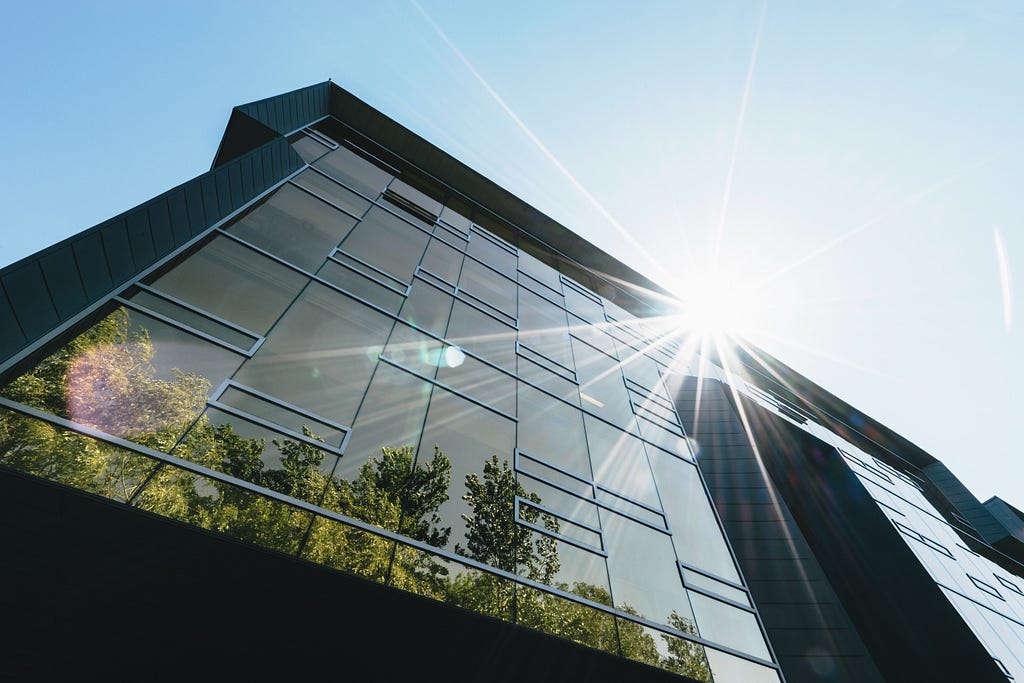New Research Shows Technology Holds Promise Despite Costlier Design Fees and Longer Construction Times

There’s a clear business case for building green.
That’s the message from the most comprehensive study to date of the marginal cost of green construction, focused on the commercial property market in the United Kingdom.
Researchers compared 336 green-certified buildings to some 2,000 non-certified construction projects built between 2003 and 2014, matching projects on construction dates and county location.
They found that green buildings cost 6.5% more to develop on average. However, such buildings have been shown to rent for 13.3%–36.5% more.
“Building green has a clear benefit for developers, investors and lenders, and owner/occupiers,” said Nils Kok, part of the research team with Andrea Chegut and Piet Eichholtz. Kok is associate professor at University of Maastricht and chief economist at property valuation firm GeoPhy.
Kok spoke to the Network for Business Sustainability with Jonathan Flaherty, senior director for Sustainability and Utilities at real estate developer Tishman Speyer in New York. Kok and Flaherty agree: Building green makes economic sense, but it has upfront costs, particularly around design fees and construction time. It’s not clear whether those costs will soon diminish. Below are key observations and other highlights from the conversation.

The business case for green buildings matters.
Green buildings aim to positively impact the natural environment in their design, construction, and operation. That’s an important goal: buildings and construction represent 39% of global carbon emissions.
Yet green buildings represent a small percentage of total building stock. For example, in 2019, 13.8% of commercial office stock in the 30 largest U.S. office real estate markets was environmentally certified.
“In order to convince people to do things, you need to show the real data,” Flaherty says. “This [research] is the evidence someone needs to convince their investment committee to allow them to spend 5% more on design fees, because it increases the actual rent returns.”
Building green provides overall value, despite variation.
The business case for green building should apply in most developed markets, Kok says. “Whether in London, New York, Singapore, Sydney, or Toronto, studies show that green-certified buildings sell at slightly higher prices, rent at slightly higher rates, and typically have occupancy that is a little higher.” (In emerging markets, green buildings may have different costs and returns due to other market dynamics, Kok says.)
The higher occupancy rate for green buildings is especially appealing to developers, Flaherty says. With his firm’s green buildings, “we’re much more interested in velocity [of renting] than we are in the actual rent number per se. We think that it’s much more valuable to us to never have vacant space.”
While 6.5% is the average additional cost for green building, precise costs will vary by project. “Developing in different markets has vastly different costs even within the United States,” Flaherty says, due to variations in labour markets — e.g., union involvement — and access to materials. As a result, buildings in different cities, even if “literally identical down to the last nail,” will be built “by different trades and different sequences and different ways.”
Upfront costs for green building are an obstacle.
The higher cost of green building comes from two specific construction cost elements, the researchers found: design, and fittings and finishes, such as lighting and flooring materials. Green building design costs are 32% higher than the costs of conventional building design, and fittings and finishes costs are higher by 32% and 28%.
While design fees are only 3% of overall green building costs, they pose a particular obstacle to green construction. Developers pay design fees early on, when ultimate project success is uncertain.
“Design costs have an outsized impact on the construction practices ultimately,” Kok says. “For developers, it’s like, ‘Oh, whoa. That’s what I pay upfront before I get a construction loan — my own money goes into a design set and a plan that I can then take to prospective tenants, investors, or owner occupiers for them to take that building off my balance sheet.’”
Green building construction also takes 11% longer than construction of a conventional building of comparable size, the researchers found. As a result, builders wait longer for cash flow from rentals or for the project to be sold.

Will green design get cheaper?
Kok thinks that learning and competition will eventually drive down both design costs and the longer construction time. He compares these challenges to green building consulting: “That went from niche and expensive to something that many parties in the market can now provide. And the same, I think, is happening with design and construction. It’s become more common to integrate energy efficiency and other sustainability features into the design, but it’s still emerging.”
Flaherty is less optimistic about the uptake of new approaches. Green design and construction are complicated, he says, and relevant fields — architecture and engineering — aren’t structured to meet the challenge. “Architecture and engineering are highly fragmented businesses with lots of sole proprietors,” he said. “It’s really, really complicated to design a LEED platinum 1 million-square-foot office building.”
Spreading that knowledge will happen slowly, he predicts: “In small firms, they don’t have the cash flow to have people going to conferences and spending hours going to online seminars and learning.”
Green building benefits occupants as well as developers.
Beyond financial returns, green building has health benefits for occupants, Kok has found in other research. Green buildings have better air quality — e.g., materials that are not off-gassing — and stimulate occupants to move.
These findings on employee well-being may be especially relevant now. “With the COVID-19 pandemic, that notion of health and buildings is central,” Kok says. “If we press on the same elevator buttons or sit too close, that could spread disease. On the other hand, buildings that have high quality air filtration, which green buildings typically have, can really influence your health. I think that post COVID-19, more and more companies will say, ‘If we have our people in buildings’ — which will eventually happen again — ‘how can we make sure that we keep them healthy?’”
A longer version of this article was published by the Network for Business Sustainability.
B The Change gathers and shares the voices from within the movement of people using business as a force for good and the community of Certified B Corporations. The opinions expressed do not necessarily reflect those of the nonprofit B Lab.

The Business Case for Building Green was originally published in B The Change on Medium, where people are continuing the conversation by highlighting and responding to this story.